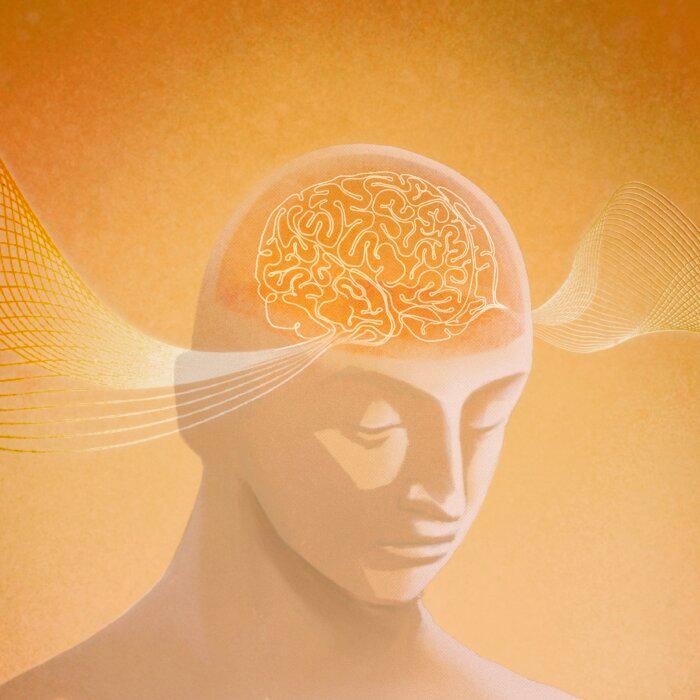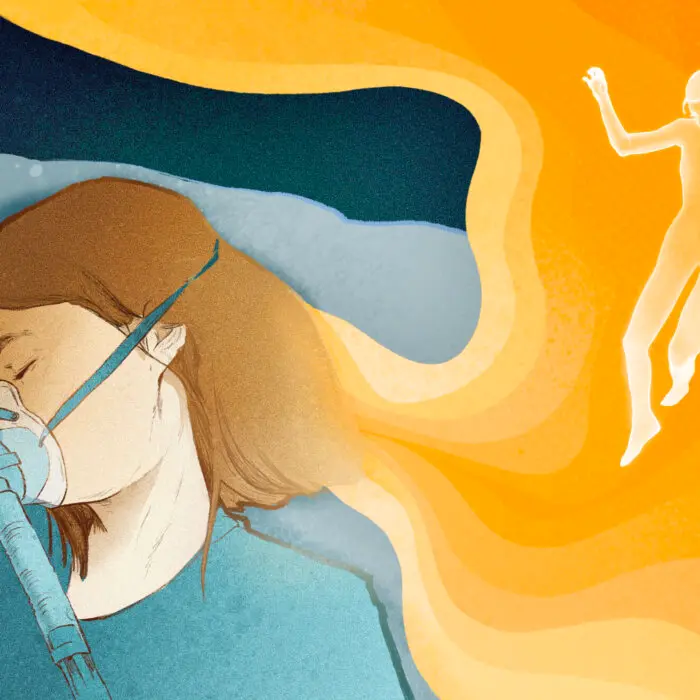Dr. Eben Alexander was at the height of his career as a neurosurgeon. With a doctorate in medicine from Duke University and a residency from Harvard, he believed he understood consciousness and the brain. However, on Nov. 10, 2008, a rare and severe bacterial infection attacked his brain, challenging everything he thought he knew.
“I was in a place of clouds. Big, puffy, pink-white ones that showed up sharply against the deep blue-black sky. Higher than the clouds—immeasurably higher—flocks of transparent orbs, shimmering beings arced across the sky, leaving long, streamer-like lines behind them,” Alexander wrote in his book, “A Proof of Heaven.”
“I witnessed all of that realm in all of its majesty,” Alexander recounted during an interview with The Epoch Times. “Though I didn’t know where I was or even what I was, I was absolutely sure of one thing: This place I’d suddenly found myself in was completely real,” he said.


Multiple Dimensions
Physicists recognize that there may be numerous dimensions. Modern physics embraces the concept of multidimensional space and parallel universes as a serious scientific idea.Leading theories include string theory and M-theory. String theory posits that the fundamental building blocks of the universe are not just particles but tiny, vibrating filaments, or “strings.”
Imagine analyzing an apple. As you magnify it, you discover layers of structure down to cells, molecules, and atoms. Conventional theories usually stop at subatomic particles. String theory posits that the infinitesimally small subatomic particles are actually strands of energy vibrating in different patterns, much like the strings of a violin. Each distinct vibration produces unique particles, creating a cosmic symphony that constitutes all matter.
While the string and M-theories are mathematically rich and elegant frameworks that help explain certain aspects of particle physics and gravity, they do not have empirically verifiable predictions.
Out of the ‘Painting’
John Burke, who has a degree in engineering and authored multiple books on NDEs, offered an analogy: Imagine we lived inside a flat, two-dimensional black-and-white painting. In such a scenario, we would experience only length and width—up and down and side to side—but not depth.“We couldn’t even conceive of it,” he told The Epoch Times in an interview.
Burke suggested that NDEs might be like our two-dimensional consciousness peeling away from that flat painting and entering a three-dimensional world—a realm that has always existed beyond our perception. From this new viewpoint, we could look back at our flat world and understand it as part of a greater dimensional reality.
The Tunnel
Individuals with NDEs often describe passing through a tunnel-like expanse with a light at the end before entering the other dimension.“I pondered the purpose of the tunnel. It seemed to stretch from Earth into the universe for a distance measured in light years,” Dougherty wrote.

Notably, the team identified tunnel experiences as one of the main characteristics of NDEs.
Timeless ‘Whole Life’
Of 617 near-death experiences collected by the Near-Death Experience Research Foundation published in a 2014 study, 14 percent of the near-death experiencers experienced a life review. This experience felt like watching a stereoscopic movie of their life.According to Bernard Carr, emeritus professor of mathematics and astronomy at Queen Mary University of London, many elements of NDEs, such as the tunnel phenomenon, intense light, and life reviews, align with the idea of transitioning through or interacting with higher dimensions. He interprets these experiences not as hallucinations or brain-generated phenomena but as glimpses into the true multidimensional nature of reality.
“I then began to see my whole life unfolding before me like a film projected on a screen, from babyhood to adult life. It was so real!” Roger recalled.
He said the experience was more realistic than a 3D movie, as he could sense the feelings of the people he interacted with over the years and the good or bad emotions he made them feel.
Those who experience a life review during a near-death experience often recount it with a deep sense of realism. This includes re-experiencing long-forgotten events often confirmed to have occurred, as well as a deep understanding of the thoughts and feelings of others during past interactions.
Life reviews appear to access a dimension where all events are recorded in their entirety, and time flows differently—allowing the person to review their entire life instantly.
The book “Lessons From the Light,” co-authored by Kenneth Ring, professor emeritus of psychology at the University of Connecticut, who published nearly 100 papers on NDEs, recorded a case of a man who reported re-experiencing every event in 22 years of his life.
“The brightness showed me every second of all those years, in exquisite detail, in what seemed only an instant of time,” he said.
“It’s a reliving of events, not just a remembering of events,” said Alexander. He explains that during the life review, if you had acted selfishly toward others during your lifetime, you would experience those events again, but now from the viewpoint of the people who experienced the suffering.
Memories Before Birth
As near-death experiences suggest evidence of other dimensions, studies on prebirth memories have also yielded intriguing insights.
To his surprise, a recurring theme in the recollections was that the children described coming from a place “above the colorful clouds,” where they coexisted with angels and fairies.
Ikegawa recorded these findings in his research books, such as “When I See My Mom on the Clouds.”
Children recalled being on a cloud in a higher dimension and coexisting with angels and fairies. When they found their mothers, they left the clouds and flew into their mothers’ wombs.
For example, a boy named Yuichi was three years old when he stared at a wedding picture of his parents and told his mom, “I was watching it from the sky.”
The boy added that he saw his mom and dad spending time at the beach at that time. Her mother confirmed that after the wedding ceremony, they had gone to the beach.
Higher Dimensions
Dr. Peter T. Walling, from Baylor University Medical Center, told The Epoch Times that to really understand human consciousness, “We shall consider higher dimensions.”Similarly, Pravica also endorses the idea that considering higher dimensions is a reasonable way to understand consciousness.
“I can explain just about everything in this universe with one exception, and that’s consciousness.” He elaborated that while physical principles can describe much of our reality, they fail to explain our simultaneous awareness of the past, present, and future.
According to Pravica, we can also understand multidimensionality through another approach.
“The mind is the playground of the infinities,” Pravica told The Epoch Times. “Our ability to conceptualize higher dimensions—beyond the four we experience—suggests their existence. If we can think about these dimensions, they likely have a basis in reality, even if we cannot directly perceive them.”
Pravica argues that we can think outside the box about multidimensionality through cross-discipline approaches, including mathematics, philosophy, and contemplation.
Although the discussion may sound purely philosophical, a particular type of empirical brain measurement suggests a link between consciousness and higher dimensions.
Gamma Waves
The human brain electroencephalogram (EEG) has five common types of waves, of which gamma waves have the fastest frequency (up to 32–100 Hz) and the smallest amplitude.Gamma waves are associated with higher-level cognitive functions, including perception, problem-solving, and consciousness. They often emerge when a person is in a highly concentrated state of profound mental peace and tranquility.
Notably, both patients showed bursts of brain activity in different frequency ranges in a specific area at the back of the brain, which is thought to be essential for our conscious awareness.

However, the origin of these gamma waves cannot be explained by brain activity, as the patients’ bodies were dying, and their brains were hypoxic—deprived of oxygen.
Heavenly ‘Home’
In the previous three articles in this series, we have provided large volumes of modern biomedical research on people living with minimal brain matter, near-death experiences, and past life memories, suggesting that our brain is not a prerequisite of our consciousness and that consciousness is nonlocal, non-physical, and continuous.All these reports and studies offer valuable insights into the origin of consciousness, which appears to be intricately linked to a higher destination.
“[I was going] back to my origin and the origin of everything,” reported a participant in the study.















